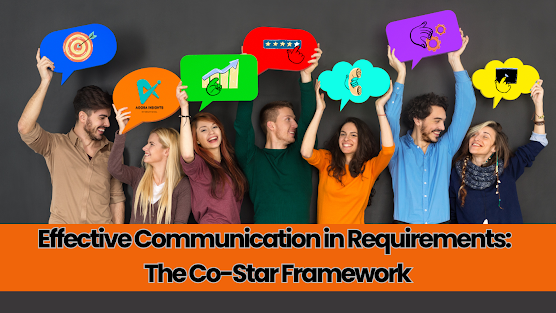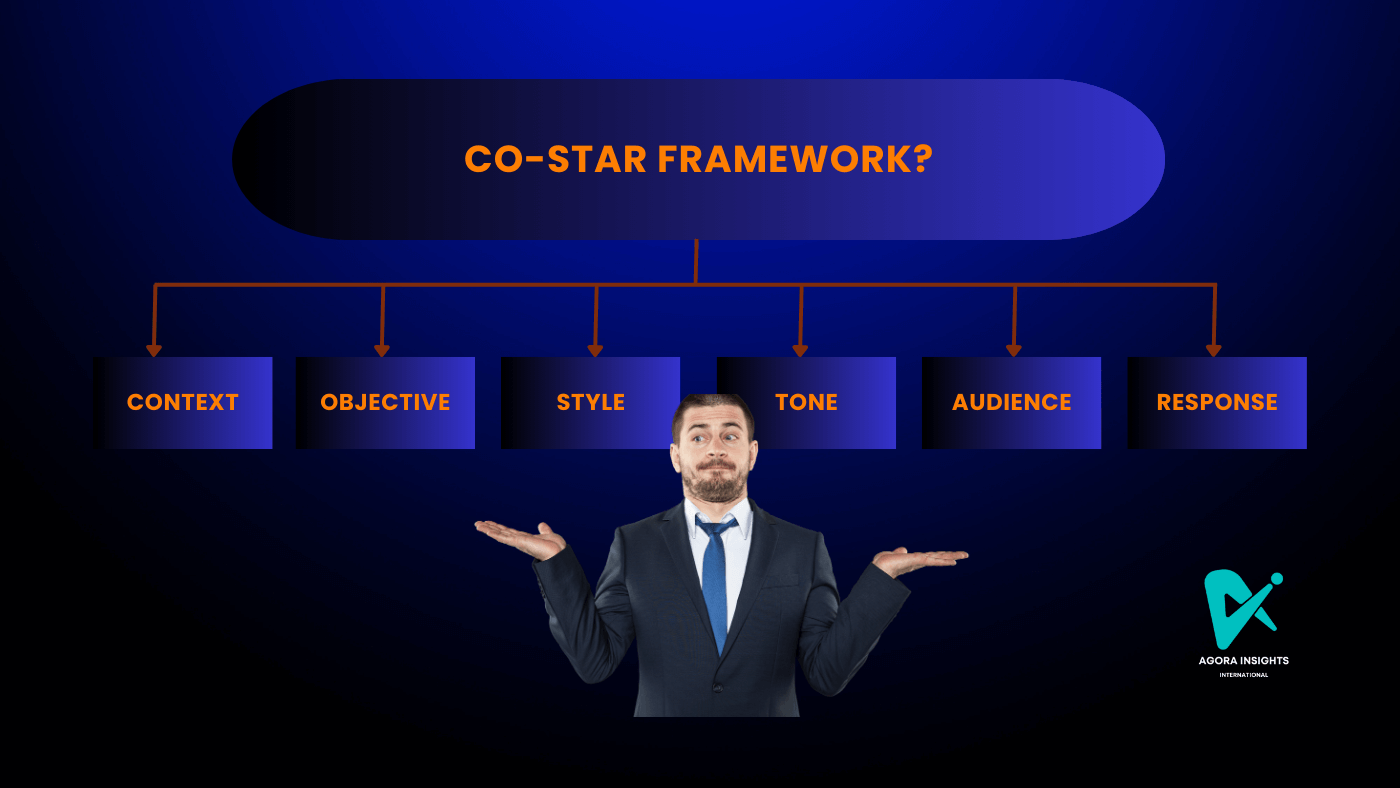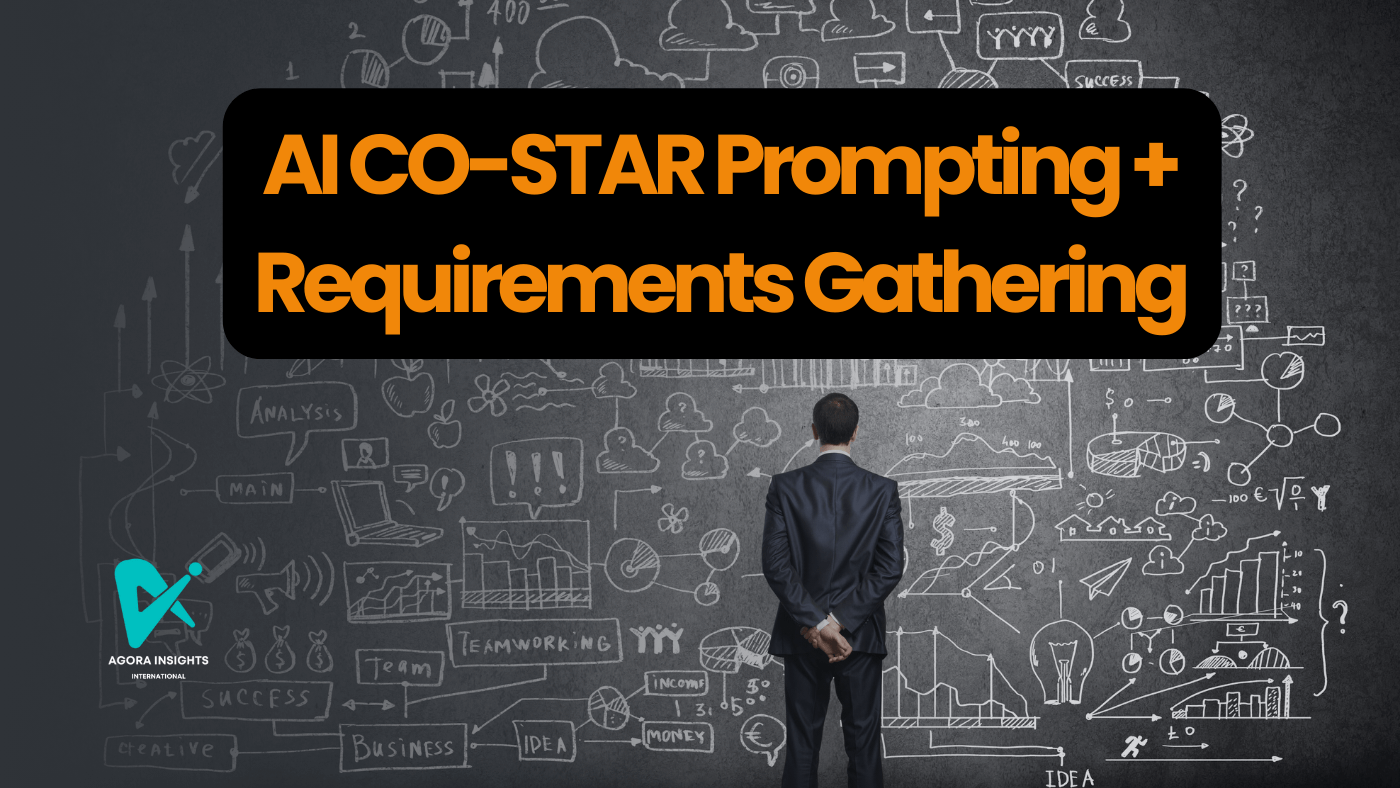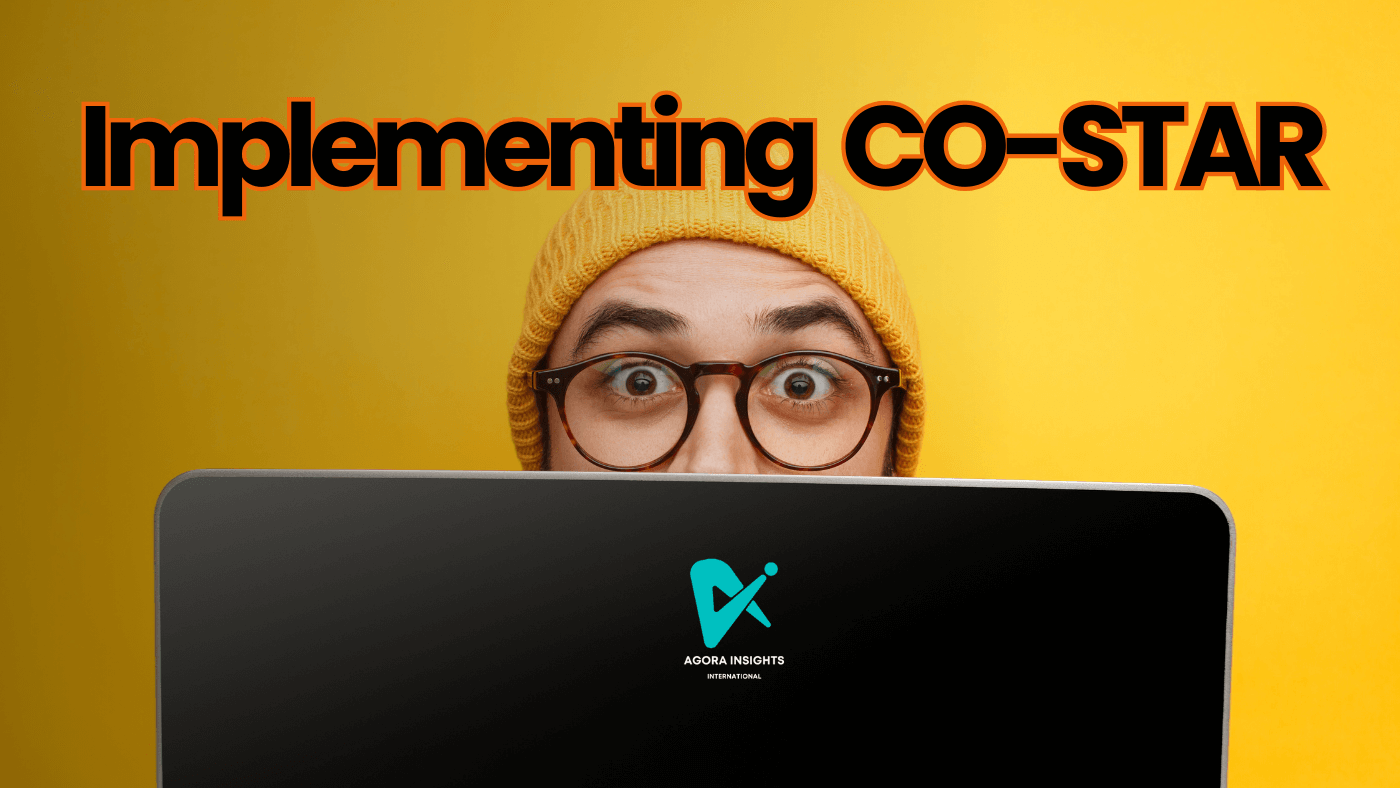Introduction
It doesn't matter where you are or who you with, effective communication is essential. Ironically, the same applies for AI prompting. As organizations increasingly rely on artificial intelligence (AI) to support decision-making and analysis, the ability to communicate clearly with both human stakeholders and AI systems becomes paramount. The CO-STAR framework offers a structured approach to prompt engineering that enhances communication not only with AI but also among team members, ultimately improving the quality of business requirements and outcomes.
This blog will explore the CO-STAR methodology, detailing how it functions, its relationship to requirements gathering, and its role in fostering effective communication among people and AI in a business context.
Understanding the CO-STAR Framework
The CO-STAR framework is designed to optimize the way prompts are constructed when interacting with AI language models. Each component of CO-STAR represents a critical aspect of effective communication, ensuring that users can articulate their needs clearly and receive relevant, actionable responses.
Breakdown of CO-STAR Components
- C - Context: Providing context is crucial for effective communication. In this component, users supply background information that helps the AI understand the environment in which it operates. This could include details about the task, project goals, or relevant data.
- O - Objective: Clearly defining the objective of the interaction is essential. This component specifies what the user aims to achieve from the AI's response, guiding the AI's output toward a specific goal.
- S - Style: The style component dictates how the AI should present its response. This includes the tone, language, and structure of the output, which can vary depending on the audience and purpose.
- T - Tone: Tone refers to the emotional quality of the response. Whether the tone should be formal, casual, persuasive, or informative, this component helps align the AI's output with the user's expectations.
- A - Audience: Understanding the target audience is vital for effective communication. This component specifies who will receive the information, allowing the AI to tailor its language and complexity accordingly.
- R - Response: Finally, the response component outlines the desired format of the AI's output, whether it be a report, list, table, or any other structure that suits the user's needs.
By utilizing the CO-STAR framework, users can enhance their interactions with AI and improve their communication with colleagues, ensuring that outputs are relevant, actionable, and aligned with business objectives.
The Importance of Effective Communication in Business Analysis
Effective communication is the cornerstone of successful business analysis. It ensures that stakeholders understand requirements, promotes collaboration, and facilitates informed decision-making. Here are several key reasons why effective communication is essential:
1. Clarity in Requirements Gathering
In business analysis, gathering requirements is a critical task. Clear communication helps analysts articulate what stakeholders need, ensuring that everyone is on the same page. The CO-STAR framework aids in this process by providing a structured approach to formulating questions and prompts.
For example, when gathering requirements for a new software system, an analyst can use CO-STAR to frame their inquiries:
- Context: "We are developing a new customer relationship management (CRM) system."
- Objective: "Identify the key features that users need to enhance their workflow."
- Style: "Use bullet points for clarity."
- Tone: "Maintain a professional tone."
- Audience: "Target end-users and department heads."
- Response: "Provide a prioritized list of features."
By structuring the inquiry using CO-STAR, the analyst can ensure that the responses are targeted and actionable, leading to a more effective requirements-gathering process.
2. Enhancing Collaboration
Effective communication fosters collaboration among team members. When everyone understands their roles, responsibilities, and the objectives of a project, it creates a cohesive working environment. The CO-STAR framework can be used in team meetings to clarify discussions and ensure that all voices are heard.
For instance, during a brainstorming session, team members can use CO-STAR to articulate their ideas:
- Context: "We need to improve customer engagement strategies."
- Objective: "Generate innovative ideas for enhancing customer interaction."
- Style: "Present ideas in a structured format."
- Tone: "Encourage a positive and open-minded tone."
- Audience: "All team members participating in the session."
- Response: "List three ideas per participant."
This structured approach not only helps in generating ideas but also ensures that each team member's contributions are valued and considered.
3. Building Trust and Transparency
Trust is a fundamental element of effective communication. When stakeholders feel that their input is valued and understood, it fosters a sense of transparency. The CO-STAR framework can help build this trust by ensuring that communications are clear and consistent.
For example, when presenting findings from a data analysis project, an analyst can use CO-STAR to communicate results effectively:
- Context: "We analyzed customer feedback data from the past quarter."
- Objective: "Summarize key insights and recommendations."
- Style: "Use charts and graphs to illustrate findings."
- Tone: "Maintain an informative and neutral tone."
- Audience: "Executive team and department heads."
- Response: "Provide a visual report with key takeaways."
By following this structure, the analyst can present the findings in a way that is easy to understand, fostering trust in the analysis and recommendations.
The Relationship Between AI CO-STAR Prompting and Requirements Gathering
The CO-STAR framework is aligned with the to the requirements-gathering process. By applying the principles of CO-STAR, business analysts can enhance their ability to elicit, document, and communicate requirements effectively.
1. Eliciting Requirements
When engaging with stakeholders to elicit requirements, the CO-STAR framework helps analysts formulate precise questions. By providing context and clearly stating objectives, analysts can guide discussions toward specific needs and expectations.
2. Documenting Requirements
Once requirements are gathered, the CO-STAR framework can aid in documenting them in a clear and organized manner. Analysts can structure their documentation to include context, objectives, and responses, ensuring that all relevant information is captured comprehensively.
3. Communicating Requirements
Effective communication of requirements is essential for ensuring that all stakeholders understand the project's scope and objectives. The CO-STAR framework provides a structured way to present requirements, making them accessible and actionable for both technical and non-technical audiences.
Enhancing Human Communication with CO-STAR
The benefits of the CO-STAR framework extend beyond interactions with AI; it also enhances communication among people. Here’s how CO-STAR can improve interpersonal communication:
1. Structured Conversations
Using CO-STAR in conversations helps individuals articulate their thoughts more clearly. By following the framework, people can present their ideas in a structured manner, making it easier for others to understand and engage with the discussion.
2. Focused Discussions
CO-STAR encourages focused discussions by prompting individuals to clarify their objectives and the context of their inquiries. This focus helps prevent misunderstandings and keeps conversations on track.
3. Improved Feedback Mechanisms
When providing feedback, using the CO-STAR framework can help ensure that feedback is constructive and actionable. By clearly stating the context, objective, and desired response, individuals can provide feedback that is specific and valuable.
Implementing the CO-STAR Methodology in Practice
Step 1: Define the Context
Before engaging in any communication, whether with AI or colleagues, users should define the context of their inquiry. This includes understanding the background of the task, the data available, and any relevant organizational goals.
Step 2: Clearly State the Objective
Once the context is established, users should articulate their objective. This could involve asking for specific insights, recommendations, or analyses. For instance, a user might state, "I want to understand the potential market trends for our new product line."
Step 3: Specify Style and Tone
Users should consider the style and tone of the response they want, whether it be formal, casual, persuasive, or informative. This consideration is particularly important when communicating with different stakeholders.
Step 4: Identify the Audience
Understanding the audience is crucial for effective communication. Users should specify who the response is intended for, allowing the AI or their colleagues to tailor their language and complexity accordingly.
Step 5: Outline the Desired Response Format
Finally, users should specify how they want the response to be presented. This could include requests for bullet points, tables, or detailed reports. By providing clear instructions on the desired format, users can ensure that the output is easy to understand and actionable.
Conclusion
Effective communication is essential for successful business analysis, and the CO-STAR framework offers a structured approach to enhance this communication. By applying the principles of CO-STAR, analysts can improve their interactions with AI systems, gather and document requirements more effectively, and foster collaboration among team members.
As organizations continue to navigate the complexities of the digital age, embracing the CO-STAR methodology will empower professionals to communicate more effectively, driving insights and improving outcomes. In a world where technology and human expertise must coexist harmoniously, the CO-STAR framework serves as a bridge, connecting the capabilities of AI with the nuanced understanding of human analysts, ultimately leading to better decision-making and organizational success.
This revised article emphasizes effective communication, the workings of the CO-STAR framework, its relationship to requirements gathering, and its role in enhancing interpersonal communication. If you have any further adjustments or specific sections you would like to expand upon, please let me know!
To get biweekly videos and interviews from leaders around the world, why don't you try connecting to our Architecting AI for Business Newsletter
Want to access more content, connecting with the Inner Circle is recommended
Just a reminder that Agora Insights and now Aidon.ai open up a world of learning and AI-Assisted Solutions for Business Architects, Analysts, Strategists, and Business Leaders.
To watch more videos, visit YouTube.
Interested in business architecture and business analysis certification, corporate and AI training?
Go to our website www.agorainsights.com
Connect with Deirdre Caren on LinkedIn
Post sponsored by Agora Insights Ltd








Post a Comment